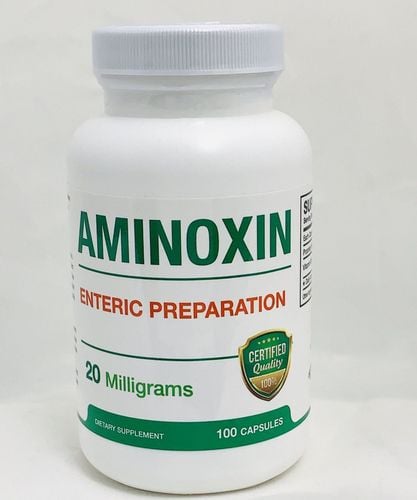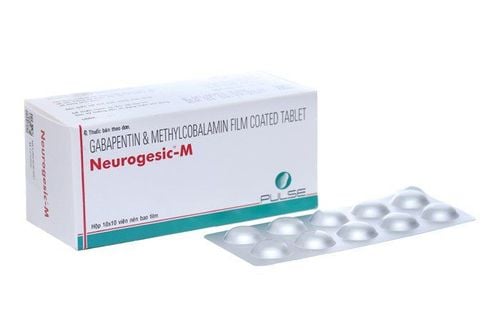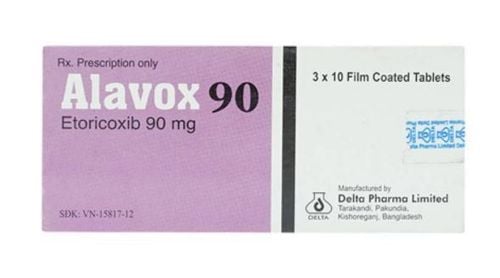This is an automatically translated article.
Pazostin contains the main ingredients are vitamin B1 and vitamin B6. The drug is sold at most drugstores nationwide, so patients can easily find and buy it according to the doctor's prescription. So what does Pazostin treat?
1. What is Pazostin?
Pazostin contains mainly B vitamins, including vitamins B1, B6 and B12. Pazostin is a prescription drug, used in cases of osteoarthritis or nerve pain.
The pharmacokinetic effects of Pazostin are known as follows:
Vitamin B1 is readily absorbed from the gastrointestinal tract and excreted in the urine. The body uses about 1mg of vitamin B1 per day. Vitamin B6 is also absorbed from the gastrointestinal tract, then mainly stored in the liver and partly in the muscles and brain, except in cases of malabsorption syndromes. Vitamin B6 is excreted by the kidneys in the form of metabolites, the excess in excess of the daily requirement is excreted unchanged. Vitamin B6 exists in the body in 3 forms: pyridoxal, pyridoxine and pyridoxamine. Vitamin B6 is an essential ingredient for patients on isoniazid therapy (pyridoxine is used to treat convulsions or coma caused by isoniazid poisoning) or women taking oral contraceptives.
It is thanks to such effects that Pazostin is indicated in the following cases:
Use of vitamin B1 in the prevention and treatment of Beriberi (vitamin B1 deficiency disease). Use Pazostin to support the treatment of back pain, hip and trigeminal nerve pain. Used for subjects with fatigue, poor appetite, malnutrition and digestive disorders. Drug use in the prevention and treatment of vitamin B6 deficiency, such as alcoholism, burns, prolonged fever, hyperthyroidism, bacterial infections, congestive heart failure, gastrectomy, malabsorption related diseases liver - bile, intestinal diseases such as enteritis, diarrhea, ...
2. Usage and dosage of Pazostin
Because it is made in tablet form, Pazostin is used orally. Patients who take the drug with water, should not take Pazostin with alcoholic beverages because it will lose the effect of the drug.
About drug dosage: Depending on the purpose of use and age, there will be an appropriate dose of the drug. It is best for patients to consult their doctor before deciding to use drugs to prevent or treat diseases.
To treat vitamin B1 deficiency:
Adults: Use 4-6 tablets/day, divided into 2 times a day. Children: Take 2-4 tablets/day, divided into 2 times a day. For those with normal gastrointestinal absorption, 2mg per day is considered sufficient for nutritional supplementation. During pregnancy and lactation, it is recommended to supplement from 2 to 10mg per day to provide enough necessary vitamins.
In case of pyridoxine deficiency in adults:
Usual dose: Use from 2.5 -10mg pyridoxine hydrochloride. In the absence of clinical symptoms of deficiency, the drug should be used daily for several weeks with a preparation containing 2 - 5 mg of vitamin B6. In case of using Pazostin to treat drug-induced deficiency:
The usual dose is from 100-200mg/day, used for 3 weeks. Prophylactic dose: use from 25-100mg/day. For women taking oral contraceptives, the dose is 25-30mg/day. In case of treatment of convulsions in children dependent on pyridoxine: It should be administered intravenously with a dose of 25-100mg. 1 to 3 minutes after the injection, the seizure symptoms usually stop. Children with pyridoxine-responsive seizures usually require lifelong oral pyridoxine at a dose of 2-100mg/day.
To prevent anemia or neuritis caused by pyridoxine deficiency in patients taking Isoniazid or Penicilamin, vitamin B6 should be used daily at a dose of 10 - 50 mg. In case to prevent convulsions in patients taking Cycloserin, patients should take Pyridoxine at a dose of 100-300mg/day and divided into several times.
In case of convulsions and coma due to acute isoniazid poisoning, give the patient a dose of pyridoxine equal to the amount of isoniazid taken, concomitantly with other anticonvulsants. Normally, patients will be given intravenous injection with a dose of 1 - 4g of pyridoxine hydrochloride, then 1g intramuscularly, every 30 minutes until the dose is exhausted.
For the treatment of cycloserine overdose, use 300mg of pyridoxine hydrochloride at a dose of 25mg/kg, 1/3 intramuscularly, the rest intravenously over 3 hours.
3. Side effects and contraindications of Pazostin
Pazostin should not be used in patients with a history of hypersensitivity to any of its ingredients.
Pazostin is a drug that is easily tolerated and does not accumulate in the body, so it does not cause excess. The most common side effect, the most common is an allergic reaction, the most dangerous is shock when administered intravenously.
In addition, when using the drug in high doses and for a long time (over 2 months) can cause severe peripheral neuropathy, progressing from unsteady gait and numbness of the feet to numbness and clumsiness of the hands. If the drug is stopped, these symptoms can be reversed, although there are still some sequelae.
Pazostin drugs rarely cause side effects on the gastrointestinal tract such as nausea and vomiting.
Pazostin mainly contains vitamin B1 and vitamin B6, used for patients with vitamin deficiency and isoniazid use. The debilitated, undernourished, and patients taking pyridoxine antagonists should use the drug to achieve the desired therapeutic effect and prevent complications. Note, Pazostin is a prescription drug, patients need to use it according to the doctor's prescription, absolutely do not self-treat at home.













